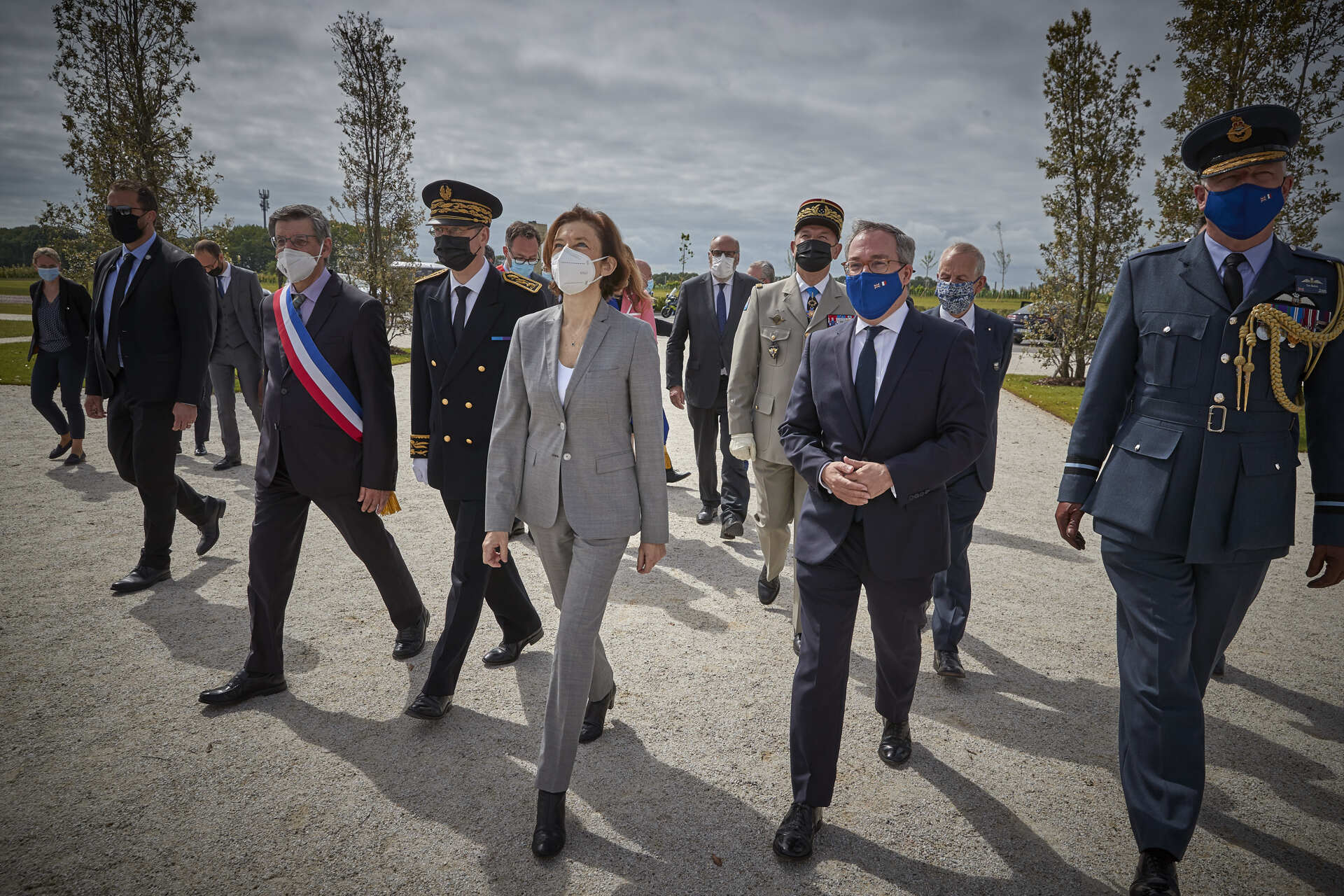Accueil Patrimoine Un peu d'histoire British Memorial
Partager Partager sur Facebook Partager sur X - Twitter Partager sur Linkedin Partager par email
Conceived in June 2015 by British veteran George Batts during a meeting with BBC journalist Nicholas Witchell, when the latter suggested creating a British memorial in Normandy.
George Batts had pointed out that the United Kingdom, alone among the main Allied nations of the Second World War, did not have its own national memorial in Normandy, recording the names of all those who, under British command, died on D-Day and during the Battle of Normandy.
D-Day veterans were involved from the beginning, not only in the design and development, but also in fundraising.
In 2016, some possible sites for the Memorial were identified and a small group of veterans were invited to visit them to decide which one to choose. Ver-sur-Mer was chosen, the outstanding feature being the view of the beaches and the remains of the port of Mulberry at Arromanches. On a clear day, the view extends from Le Havre to the Cotentin.
In 2016, 2017 and 2018, work was carried out to secure funding, develop the design, and then identify and purchase the site near Ver-sur-Mer. It was to be a European project using French Massangis stone quarried in Burgundy for the pillars, Norwegian granite, Italian paving, French oak and trees from Normandy and Germany. The construction is the result of a collaboration between French and British companies.
Funding was primarily provided by the British government, which contributed £20 million of the £30 million construction costs - the remainder coming from private benefactors. Ongoing maintenance is managed in collaboration with the Commonwealth War Graves Commission and through voluntary contributions.
The foundation stone was laid on June 6, 2019 by French President Emmanuel Macron and British Prime Minister Theresa May.
Two years later, on June 6, 2021, the Memorial was opened by His Royal Highness the Prince of Wales, who attended remotely due to Covid restrictions at the time. He was assisted by the British Ambassador to France, Lord Llewellyn, and the Minister for the Armed Forces, Mme Parly, who were present in person.

The purpose of the Memorial has never been to celebrate the victories of the Normandy campaign, nor to glorify it. Its purpose is simply to record and remember the names of those from over 30 countries who were under British command and who lost their lives during the Normandy campaign. It is important to note that the names of those who have no known grave are recorded here.
The entrance is lined with stones depicting the Battle of Normandy. In the centre is a D-Day wall with the names of the 1,746 people who lost their lives on June 6, 1944. On each side are 160 white columns inscribed with the names of those who died on the following days, in chronological order, clockwise from the centre.
In total, all the names of the 22,443 men and women under British command who lost their lives during the Battle of Normandy are inscribed on the Memorial.
To the west of the site is a memorial dedicated to the 20,000 French civilians who not only lost their lives during the Battle of Normandy, but also to the many others who were injured or whose homes were destroyed.
Thus, the Memorial serves as a focal point for remembering those who lost their lives to liberate and bring peace to Europe.
Today, the Memorial is growing after a difficult start due to Covid. With the help of BBC television, which put the Memorial and Ver-sur-Mer on the map, more and more people are visiting the site in an act of remembrance. It is recognized as a place of peace and tranquility, the view of the beaches adding to the very moving beauty of this wonderful memorial to those who gave so much.
The Memorial is accessible year-round and more information can be found on its website here.
An app has also been created for Android and Apple devices to accompany the tours and can be installed here.
You can contact the British Memorial by Email at the following address contact@britishnormandymemorial.org, or on FaceBook by clicking on the link below:
Normandy Memorial Trust
13 avenue Paul Poret
14114 Ver-sur-Mer - France